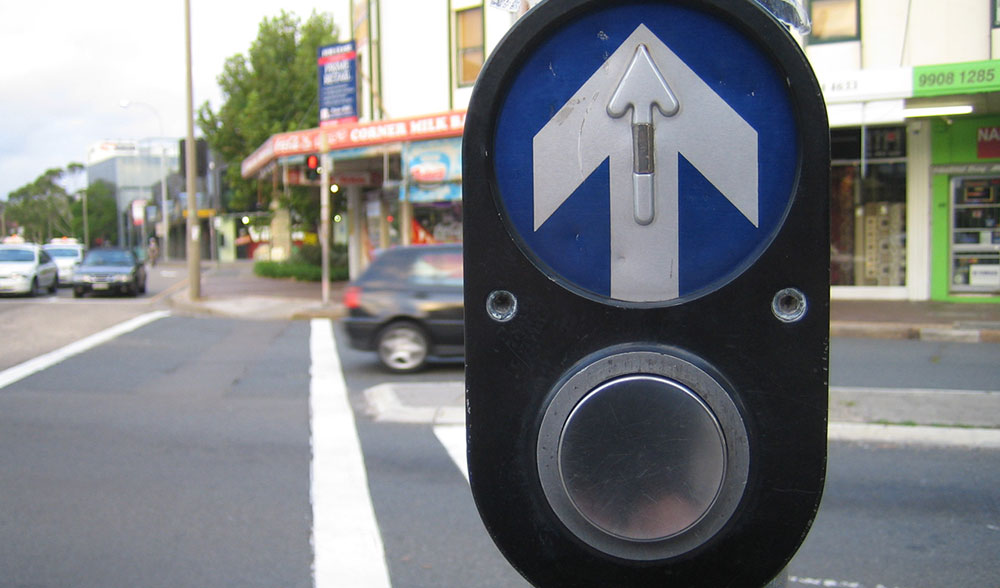
The Australian pedestrian button
Wednesday 3rd August 2016 3:14 pm
Dr Karl’s ode to the ergonomic and elegant design of the pedestrian button.
IN 1884, PLAYWRIGHT Oscar Wilde wrote, in The Value of Art in Modern Life, “I have found that all ugly things are made by those who strive to make something beautiful, and that all beautiful things are made by those who strive to make something useful.”
What would Wilde think of the PB/5 – the standard button that Australian pedestrians press when wanting to cross the road at a traffic light?
A switch for pedestrians has to be robust, elegant and intuitively easy to use by everybody – including pedestrians who are sight- or hearing-impaired. The PB/5, which was patented back in the 1980s, has all this under control. You’ve seen it – a 25cm-high box with safe rounded edges bolted onto a traffic pole at a crossing. The semi-circular upper half has a large white arrow on a blue background. The bottom half has an enormous dished circular button.
You’ve heard it too – slow chirps, followed by a single “Baoooow”, and the urgent “tock-tocktock”. The sounds are part of the elegant and intuitive design. First, the slow chirps at two-second intervals (the ‘DON’T WALK’ signal) reminding you that this is the time to wait. The patent describes the chrips as the ‘locator sound’ – so sight-impaired people can easily find the button and crossing. The frequency was specifically chosen to be clearly audible in city traffic. Second, the single baoooow noise (called the ‘change tone’) alerts you that something has changed. Third, the rapid tock-tocktock (the ‘WALK’ signal), repeated eight times a second, tells you to get moving.
As part of the elegant design, a single transducer behind the circular upper half does three jobs. First, it acts as a loudspeaker to amplify the three different sounds. Second, it acts as a microphone that gauges the ambient noise and raises and lowers the loudspeaker volume making it audible above background noise without being irritatingly loud. Third, it vibrates in different modes, so that sight- and hearing-impaired people can touch it and know whether to wait, or walk.
I feel sure Wilde would have loved the utility and beauty of what is officially called the ‘PB/5 Audio-Tactile Pedestrian Push Button Signalling System’.
© 2025 Karl S. Kruszelnicki Pty Ltd



Comments